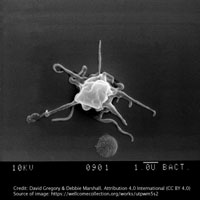Platelet indices as prognostic markers in the critically ill patient

All claims expressed in this article are solely those of the authors and do not necessarily represent those of their affiliated organizations, or those of the publisher, the editors and the reviewers. Any product that may be evaluated in this article or claim that may be made by its manufacturer is not guaranteed or endorsed by the publisher.
Authors
Platelet indices such as mean platelet volume (MPV), platelet (PLT) count, plateletcrit (PCT), and platelet distribution width (PDW) describe platelet morphology and proliferation kinetics. Our study aimed to evaluate the utility of platelet indices as prognostic markers in critically ill patients. This was an observational, descriptive study conducted on 106 critically ill adults for 24 months in the Medical Intensive Care Units of a tertiary care hospital. Analysis of the data was done using statistical software R version 3.6.0 and MS Excel. The mean age of patients was 42.3±5.8 years. Non-survivors had lower PLT count and PCT when compared to survivors. PDW and MPV were higher for non-survivors when compared to survivors. PLT count of <90,000 cells/cu mm displayed the highest sensitivity (94%), while PDW demonstrated the highest specificity (96%) in predicting mortality among critically ill patients. Abnormally low PLT count, high PDW, and high MPV values are associated with severe illness and put the patients at high risk of death as compared to patients with normal PLT indices.
How to Cite
PAGEPress has chosen to apply the Creative Commons Attribution NonCommercial 4.0 International License (CC BY-NC 4.0) to all manuscripts to be published.






